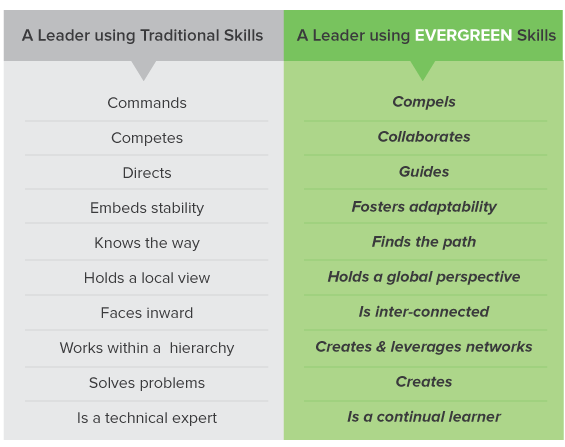What is Evergreen Leadership?
Simply put, we help leaders and the organizations they lead learn to thrive in a state of flux. Today’s environment, in business, education, service and political, is buffeted by an unprecedented velocity of change on all fronts. And the only thing likely to change is that the pace of change will get faster and even more unrelenting. Leading and working in today’s world requires a different skill set – of everyone.
Why the Evergreen Metaphor?
Evergreens carve out a unique niche in every eco-system on earth. While most plants repeat the process of dormancy, growth, blossoming, yield and decay – evergreens have a different adaptive mechanism to stay green and to avoid the extreme cycles of other plants. Evergreens shed and replace leaves on a continual basis. The greenery that they shed serves two purposes: to put needed nutrients back into the soil and to make the soil more acidic and hence, inhospitable to other plant forms – but perfect for evergreens. Some evergreens thrive in rain forests, others in drought stricken areas. No matter their environment, they are resilient and adaptive.
What is an Evergreen Leader?
Evergreen leaders share many of the same traits that make evergreens in nature so resilient. Leaders in our programs learn to continually shed what is of no use to them and allow new, healthy growth to appear. Evergreen leaders can find a foothold in even some of the most inhospitable environments. Evergreen leaders nurture their soil and roots and create a climate where other can thrive. Evergreen leaders adapt to the conditions they are in – and find ways to fit into their ecosystem.
How is Evergreen Different Than Traditional Leadership?
Evergreen leaders have the capability to use a new, more adaptive approach to leadership, the skills called for in today’s complex, changing and connected world.

What Skills Define an Evergreen Leader?
Evergreen leaders have specific skills, attitudes and behaviors that make them much more adaptable to our current turbulent business environment. They are:
- Firmly grounded in values that guide them day to day
- Agile in their approach to meet the demands of a fast changing world
- Able to envision and create better futures
- Able to provide clarity and direction in the midst of uncertainty
- Willing to engage others in creating a better future
- Strong teams builders
- Skilled at developing the capability and capacity of themselves and others
- Globally minded
- Grateful – and share their gratitude

